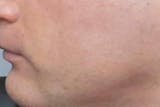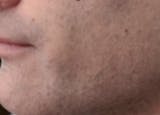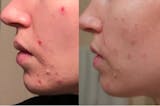Understanding the varying symptoms of eczema can be crucial for effective management.
The symptoms of eczema can be both visible and hidden. There are the most obvious: red, itchy, dry, skin. And the less obvious: a weaker skin barrier, lower vitamin D synthesis, and psychological distress.
Eczema is a chronic skin condition characterized by periodic acute flares, marked by red, itchy, and inflamed skin. The severity and duration of an acute eczema flare are influenced by three main factors:
Understanding and identifying the various symptoms of eczema is essential for proper management and timely intervention.
In this blog post, we will explore the common symptoms across different types of eczema and provide guidance on when to seek professional help.
JUMP TO SECTION:
The Common Symptoms of Eczema
Eczema symptoms may vary depending on the specific type of eczema, but certain signs are shared among most forms. Recognizing these common symptoms can help you determine if you may be experiencing eczema.
Typical eczema symptoms include:
Dry, scaly skin
Inflammation
Itchiness
Thickened skin
Blisters
Color changes
Ooze and crusting
The specific symptoms can give clues as to the cause of the eczema, so understanding the signs on your body is crucial to managing your condition. We will explore each symptom in more detail below.
Dry, Scaly Skin
Healthy skin is supple and smooth with no breaks in the surface. Whereas, individuals with eczema often have dry, flaky, and/or scaly skin. Dry skin is less flexible and elastic, so it cracks easily under movement increasing the permeability of the skin to new triggers, making the skin sensitive and easy to agitate.
Mildly dry skin can feel rough, while severely dry skin can have deep fissures and dead skin flaking off. In some cases, the skin can appear scaly with a number of large, thickened flakes on the affected area.
Inflammation
Inflammation is part of the body's defense mechanism, indicating that the immune system is actively trying to remove damaged cells and/or fight infection.(PAH 2022) Inflammation in eczematous skin is caused by the activity of the immune system reacting to a trigger.
The skin can feel warm to touch, itchy and in some instances swollen. In people with lighter skin, the inflammation may appear red. For those with darker skin, the inflammation may appear more purple or gray.(CAS 2016) For both, the inflamed areas may feel warm, itchy, or swollen. The inflammation results from the immune system reacting to a trigger, such as an allergen, irritant, or emotional stressor.
Itchiness
An itch is defined as an “unpleasant sensation that leads to the need to scratch”.(MIS 2018) There are four sources of itches as defined by medicine: neurogenic, neuropathic, psychogenic and pruritoceptive.
Pruritoceptive itches are generated in the skin as a reaction to inflammation or skin damage and subsequently is the predominant source of itch for eczema sufferers.(TIV 2009)
During the initial phase of an eczema flare, histamines are a key component to pruritoceptive itches. In the mid- and late-stage flare, itch is often driven by IL-4 production (which antihistamines are not effective in relieving).(GAR 2013)
Itching can be the most unpleasant and debilitating symptom of eczema. The severity can range from mild and acute, to totally continuous and overwhelming. The resulting scratching can damage the skin and result in increased intensity of itchiness.
Emotional stress from eczema can contribute towards a psychogenic itch and itch sensitization can occur where itchiness can increase and be triggered more easily.
Thickened Skin
Heavy scratching or rubbing of the skin can lead to thickened skin.(TIV 2019) This is also known as secondary lichenification.(ABO 2022) Thickened skin can appear to have exaggerated skin markings and feel leathery. The skin will remain thickened whilst the scratching or rubbing continues.
Blisters
Blisters are clear-fluid sacks on the skin. They can be found in three types of eczema: pompholyx, contact and discoid. In pompholyx eczema where they appear primarily on hands and feet.(CHA 2006)
In contact eczema, small blisters can appear anywhere on the body, often in the area of skin which was in contact with the trigger.(CHA 2016) It can also indicate an allergen was present rather than an irritant. In discoid eczema, small blisters can appear within the discoid patch.(CHA 2006)
Color Changes
The color of your skin can change if you have eczema. The change in color depends on the initial color of the skin and the type of eczema present. For people with darker skin, patches of eczema might look darker or lighter than the original shade.(CHA 2006)
Patches of dry skin can have higher cell turnover and therefore can cause a dappled effect on tanned skin, where the eczema patches appear paler. For people with lighter skin, inflammation appears pink or red whereas it can appear gray or purple on darker skin.
Scratching skin can change the tone of skin color, darker or paler, and the skin eventually returns to the normal coloring when the scratching is under control.(CHA 2006) With seborrheic eczema, the affected skin can appear yellowed.
Ooze and Crusting
Inflamed skin can release a clear or yellowish fluid from the surface. Serum, the fluid-component of blood, can leak dilated blood vessels found in inflamed tissue.
The leakage can lead to swelling and ooze from the skin.(MHJ) As the fluid dries on the surface of the skin, it leaves behind yellow or orange crusting. Oozing and crusting can be experienced with any type of eczema but it is unlikely in asteatotic.
Oozing of puss-colored or foul-smelling fluid can be a sign of infection, a complication from a compromised skin barrier.
The Variations in Eczema Symptoms
While many symptoms are common across various types of eczema, each type may have unique characteristics and manifestations. Understanding these differences can help with proper diagnosis and management.
See the table to understand what symptoms are typical of which types of eczema. See our article on the types of eczema to learn more.
Types of Eczema Vs Symptoms |
Dry Scaly |
Itchy |
Inflamed skin |
Thickened skin |
Blisters |
Color change |
Oozy & Crusty |
Y |
Y |
Y |
Y |
Y |
|||
Y |
Y |
Y |
Y |
Y |
Y |
Y |
|
Y |
rarely |
Y |
Y |
Y |
|||
Y |
Y |
Y |
Y |
Y |
|||
Y |
Y |
Y |
Y |
Y |
|||
Y |
Y |
Y |
|||||
Y |
Y |
Y |
Y |
Table mapping the symptoms experienced to each of the types of eczema.
Atopic Dermatitis Symptoms
Atopic dermatitis, the most common form of eczema, can present differently depending on the individual's age. In infants, it often appears as red, scaly patches on the cheeks, forehead, and scalp.
In children, the rash typically occurs in the creases of the elbows and knees, while in adults, it may be more widespread and involve the hands, feet, and neck. Atopic dermatitis is characterized by intense itching, and scratching can lead to skin infections and scarring.
Contact Dermatitis Symptoms
Contact eczema is triggered by direct contact with an irritant or allergen, which leads to inflammation and irritation of the skin. There are two types: irritant contact dermatitis and allergic contact dermatitis. Symptoms for both types can include redness, itching, burning, stinging, and swelling at the site of contact.
In more severe cases, the skin may develop blisters, oozing, or crusting. Allergic contact dermatitis symptoms may take longer to appear (up to 48 hours) and can last for several weeks, while irritant contact dermatitis symptoms usually appear more quickly (within minutes to hours) and resolve within a few days, provided the irritant is removed.
Seborrheic Eczema (Seborrheic Dermatitis) Symptoms
Seborrheic eczema is characterized by red, inflamed skin with yellowish, greasy, and flaky scales. It commonly affects areas of the body with a high concentration of oil-producing (sebaceous) glands, such as the scalp, face, and upper chest.
Symptoms can include dandruff, itching, redness, and scaling on the scalp, as well as red patches with yellowish scales around the nose, ears, eyebrows, and eyelids. In severe cases, seborrheic eczema can cause hair loss.
Nummular Eczema Symptoms
Nummular eczema, also known as discoid eczema, is characterized by round or oval patches of inflamed skin. These patches can be pink, red, or brown and may have a scaly, crusty appearance.
Nummular eczema can occur on any part of the body, but it is most commonly found on the lower legs, arms, and trunk. This type of eczema can be triggered by factors such as dry skin, insect bites, or skin injuries.
Dyshidrotic Eczema Symptoms
Dyshidrotic eczema is a distinct form of eczema that primarily affects the hands and feet. It is characterized by small, intensely itchy blisters filled with clear fluid. These blisters may eventually rupture, leading to oozing, crusting, and peeling skin.
Triggers for dyshidrotic eczema may include stress, exposure to certain metals, or contact with irritants. Severe cases can lead to painful fissures and an increased risk of infection.
Asteatotic Eczema Symptoms
Asteatotic eczema, sometimes referred to as xerotic eczema or eczema craquelé, is characterized by dry, cracked skin that resembles a cracked porcelain or parched riverbed. This type of eczema typically affects older adults and is most common on the lower legs, though it can also occur on the arms and trunk.
Asteatotic eczema can be caused by factors such as cold weather, low humidity, and excessive use of soaps or hot water, which strip the skin of its natural oils.
Gravitational Eczema (Stasis Dermatitis or Venous Eczema)
Gravitational eczema is caused by poor circulation, typically affecting the lower legs and ankles. The weakened blood flow results in increased pressure in the veins, leading to fluid buildup and skin changes. Symptoms can include swelling, redness, itching, aching or heaviness in the legs, skin darkening (hyperpigmentation), and skin that feels hard or tight. In advanced cases, the skin may break down, resulting in open sores or ulcers.
Complications
Eczema not only affects an individual's skin but can also lead to a range of complications that impact their overall health and well-being.(KIM 2011) These complications can include infections, social implications, and effects on mental well-being.
Infections
Eczema can weaken the skin's natural barrier, making it more susceptible to bacterial, viral, and fungal infections. Scratching the affected area can also introduce bacteria from the nails into the broken skin, further increasing the risk of infection.
Common infections associated with eczema include impetigo, cellulitis, and herpes simplex. To prevent infections, it is crucial to maintain proper skincare, avoid scratching, and seek medical attention if signs of infection are present, such as increased redness, warmth, pain, or pus.
Social Implications
The visible symptoms of eczema, such as redness, scaling, and oozing, can lead to social stigma and self-consciousness. This can be particularly challenging for children and adolescents, who may feel embarrassed, isolated, or bullied because of their skin condition. It is essential to provide support and understanding to individuals with eczema, encouraging them to seek appropriate treatment and engage in activities that promote self-esteem and resilience.
Impact on Mental Well-being
Living with eczema can take a significant toll on mental well-being. The constant itch-scratch cycle, time consuming skin routines, , fear of triggers, sleep disturbances, and appearance concerns can lead to increased stress, anxiety, and depression. In children, poor sleep could disrupt development and has been linked to various other health conditions.(RAM 2019)
The result can be emotional burnout, low self-worth, depression, anxiety and chronic stress. See the stress and mental health pages for more on this subject.
What Are The Triggers Of Eczema Symptoms?
As mentioned in the intro: eczema is a balancing act between skin barrier strength, the immune system, and triggers. The intensity of a trigger can dictate the intensity of an acute flare. Many triggers can be managed and even removed from the local environment, lowering the burden on the skin barrier and calming the immune system.
For a more detailed discussion on eczema triggers, as well as information on how to identify and manage them, please visit our dedicated triggers page. By understanding and addressing your specific triggers, you can minimize flare-ups and better manage your eczema symptoms.
Eczema Treatments & Preventions
Eczema is a balancing act between skin barrier strength, immune system activity, and trigger intensity. There are treatments and preventative measures that can be effectively used across all three areas.
For an overview of how these treatments work together please see our Treatment Page. Or for more information on each of these areas please see:
Please note that it is essential to consult a healthcare provider or dermatologist before starting any new medical treatment to ensure it is safe and appropriate for your specific needs.
Why Understanding Your Symptoms is Important
Understanding your symptoms is crucial for several reasons, including proper diagnosis, effective treatment, and prevention of complications. Recognizing the specific symptoms of your eczema can help you and your healthcare provider determine the most appropriate course of action for managing your condition.
By understanding your symptoms, you can:
Identify your eczema type: Different types of eczema have unique symptoms and triggers. Knowing the specific type of eczema you have can help you tailor your treatment and prevention strategies.
Monitor your condition: Being familiar with your symptoms allows you to track changes in your eczema, identify triggers, and evaluate the effectiveness of your treatment plan.
Prevent complications: Understanding your symptoms helps you take necessary precautions to minimize the risk of infections, social implications, and mental health concerns associated with eczema.
Seek timely medical care: Recognizing when your symptoms worsen or become unmanageable enables you to seek medical help promptly, ensuring better management of your condition and preventing potential complications.
Share your experiences with us! Tell us what has and hasn’t worked for you. What did we miss in this article that you've found personally impactful? Your insights can help others better understand and manage their eczema.



